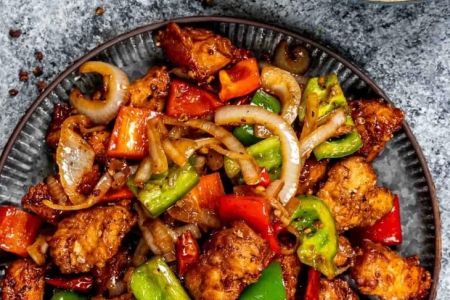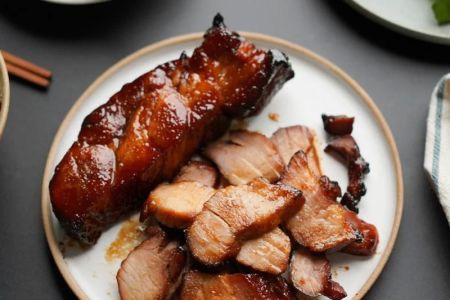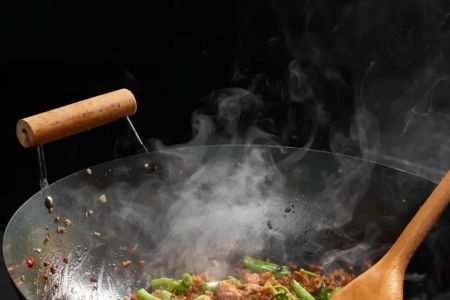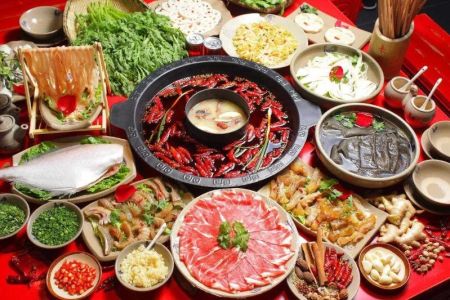What Is the "Cat" in Chinese Restaurants?
As a frequent diner at Chinese restaurants, I’ve often noticed a strange yet intriguing phenomenon: the presence of a "cat" in many Chinese restaurants. But what exactly does this "cat" symbolize, and why is it often a focal point in the restaurant's décor? If you’ve ever wondered about the meaning behind these mysterious felines, you’re not alone. Let me take you through a journey into understanding the symbolic significance of the "cat" in Chinese restaurants, how it plays a part in the restaurant’s environment, and the fascinating cultural context surrounding it.
1. The Lucky Cat (Maneki-neko)
One of the most common types of "cats" you’ll find in Chinese (and even some Japanese) restaurants is the famous "lucky cat" or "Maneki-neko." This cat is often depicted in a sitting pose, with one paw raised in a welcoming gesture. While it’s widely recognized in East Asia, its symbolism is rooted in Chinese and Japanese cultures, where the cat is seen as a symbol of good luck, prosperity, and fortune.
The origin of the lucky cat’s popularity dates back centuries. It is believed that the figure originated in Japan during the Edo period, but its appeal quickly spread to China and the rest of the world. The "Maneki-neko" is often seen in restaurants, businesses, and homes, as it is thought to attract customers and bring financial success to the establishment. The raised paw, which is said to be "waving" in customers, symbolizes the welcoming nature of the business and its desire for prosperity. In Chinese restaurants, this lucky cat is commonly placed near the entrance to attract good fortune and encourage business.
2. Symbolism Behind the Lucky Cat
While the most visible feature of the lucky cat is its paw, the symbolism behind the "Maneki-neko" goes much deeper. In many Chinese cultures, the cat is associated with good luck and the belief that it has the ability to ward off evil spirits. The color and design of the cat also have specific meanings, and many restaurant owners choose the cat’s colors and accessories based on their intentions for the business.
For instance, a golden "Maneki-neko" is believed to bring wealth and prosperity, which is why many Chinese restaurants display this color. Red "Maneki-neko" cats are thought to bring good health and ward off negative energies. Other variations might include cats holding a koban coin, which further symbolizes wealth, or wearing a bell, signaling prosperity and good luck. Many restaurants even place a set of these cats at the front of the establishment to amplify their good fortune.
3. Why Cats Are Associated with Prosperity in Chinese Culture
Now, you might be wondering why cats, specifically, are linked to prosperity and luck in Chinese culture. In traditional Chinese beliefs, cats are regarded as guardians of the home. In particular, they are thought to bring wealth by protecting food stores and homes from rodents. In ancient China, cats were often kept not just as pets, but as protectors of grain and other food supplies. This practical relationship gradually evolved into a more symbolic one, where the presence of a cat signified abundance and good fortune.
Additionally, the cat’s independent and elusive nature made it a figure of mystery and charm. The idea of the cat as a bringer of fortune was solidified in various folk stories and legends, such as the tale of the "Maneki-neko." Over time, the belief that cats could attract wealth spread to businesses, particularly restaurants, where prosperity was especially important.
4. The "Cat" in Chinese Restaurant Décor
If you’ve ever visited a Chinese restaurant, especially one in an urban area, you’ve likely seen the lucky cat displayed prominently near the entrance or on the counter. This placement is strategic, as the cat is intended to attract good luck and, by extension, customers. The presence of these cats adds to the ambiance of the restaurant and plays an important role in setting the mood for guests. Their bright colors and playful postures serve as an invitation to enter, signaling the restaurant’s desire for success.
For Chinese restaurateurs, the lucky cat isn’t just a decorative piece—it’s a tool for positive energy and good fortune. The practice of placing a lucky cat in the restaurant is also an embodiment of the Chinese belief in feng shui, which is the art of arranging the environment in a way that promotes harmony and prosperity. By aligning the décor and positioning the lucky cat in an area that faces the door, owners hope to invite in the right energy that will help the business thrive.
5. The Global Popularity of the Lucky Cat
Though the lucky cat has deep roots in East Asian cultures, its influence has spread worldwide. In the U.S., especially in areas with a high concentration of Chinese, Japanese, and other Asian restaurants, the lucky cat is commonly seen as a universal symbol of good fortune. It’s not just confined to Chinese restaurants; you’ll also find it in sushi bars, noodle shops, and even stores selling Asian-inspired goods.
As Chinese food culture continues to be embraced in the U.S. and beyond, the lucky cat has become an iconic symbol associated with the warmth and hospitality of Chinese restaurants. Many people who visit these establishments might not fully understand the cultural significance of the cat, but they appreciate the positive vibe it brings. It serves as a reminder of the rich cultural traditions embedded in Chinese food and hospitality.
6. The Role of Superstitions in Chinese Restaurant Culture
Superstitions play a significant role in Chinese culture, and Chinese restaurants are no exception. The lucky cat is just one example of how superstition influences restaurant practices. Beyond the lucky cat, many restaurant owners adhere to other traditions and rituals designed to ensure success. For example, some restaurants might avoid opening on certain days deemed unlucky by the Chinese lunar calendar or will engage in special prayers or ceremonies for good fortune.
In a sense, the lucky cat serves as a physical manifestation of these superstitions. By placing a lucky cat at the entrance of a restaurant, owners are actively seeking to invite luck and prosperity into their businesses, thereby ensuring a constant flow of customers. These beliefs are not just rooted in superstition but are deeply connected to Chinese cultural practices of honoring the past and trusting in the power of symbols to shape the future.
7. A Personal Story of the Lucky Cat
I remember visiting a Chinese restaurant in San Francisco a few years ago that had a particularly charming lucky cat near the front entrance. As soon as I walked in, the bright, golden cat with its waving paw seemed to greet me like an old friend. The food was exceptional, and as I sat down to enjoy my meal, the owner came over to chat. I asked him about the cat, and he shared how his grandmother had passed down the tradition of placing a lucky cat in every restaurant they opened. It was a family tradition that had been maintained for generations, and he firmly believed that it played a role in the restaurant's success.
His story made me appreciate the cat even more. It wasn’t just a cute decoration; it was a meaningful symbol of his family’s history and cultural heritage. It reminded me that, in a world that’s constantly evolving, these small yet significant traditions continue to connect people to their roots and bring a little luck into their lives.






![Top Chinese Restaurants for Authentic Cantonese Cuisine in [Your City]](https://img.gochinarose.com/d33/2507/4157910400_450x300.webp)
